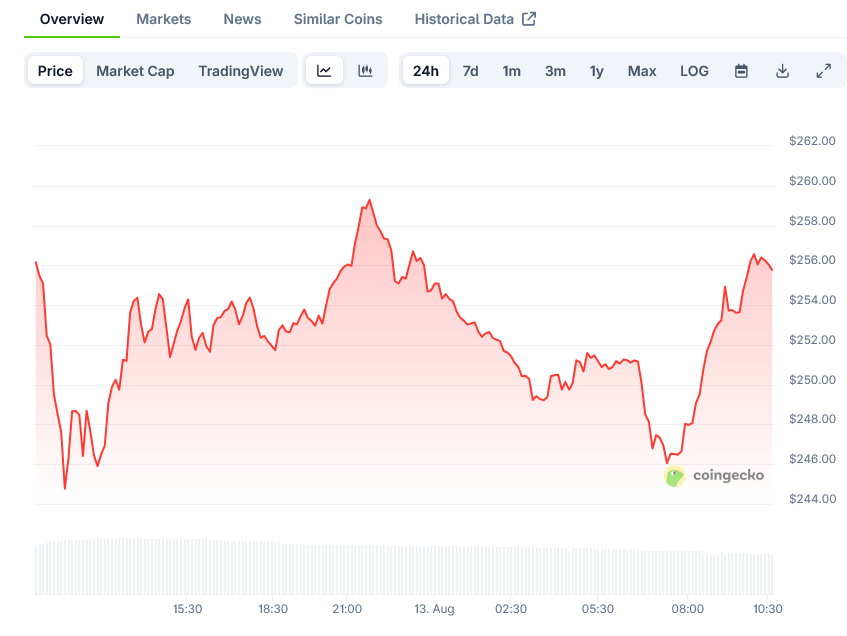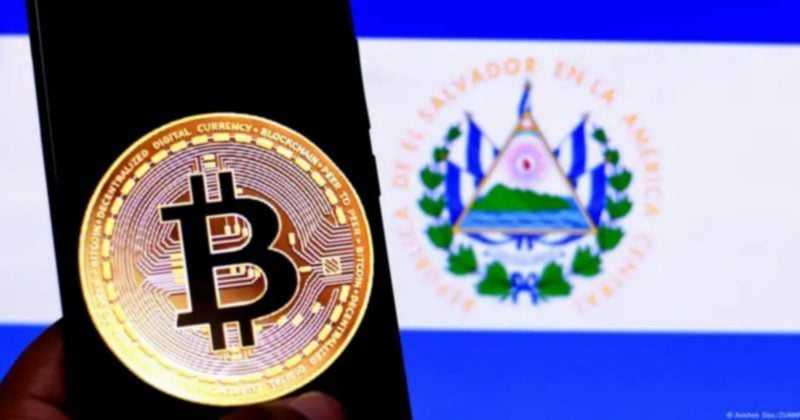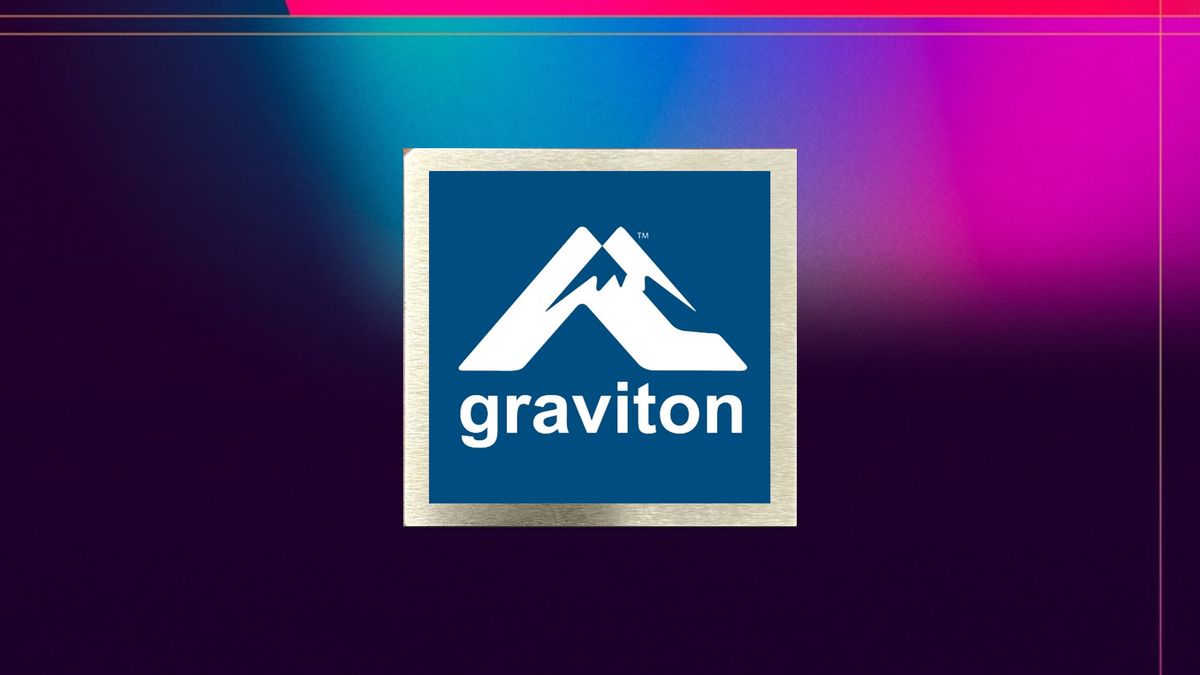TLDR
- Qubic, led by IOTA co-founder Sergey Ivancheglo, claims to control over 51% of Monero’s hashrate
- The takeover has been described as an “experiment” testing economic incentives and mining strategies
- XMR price has fallen 6-15% in the past 24 hours, with weekly losses exceeding 25%
- Qubic’s “useful proof-of-work” system converts Monero mining rewards to USDT, then buys and burns QUBIC tokens
- The attack could enable chain reorganizations, double spends, and transaction censorship on the privacy-focused network
Monero, the leading privacy-focused cryptocurrency, faces one of the most serious security challenges in its history as the Qubic project claims to have gained control of more than 51% of the network’s hashrate.
The price of XMR has dropped sharply in response to the news. It’s currently trading at around $252, representing a decline of 6-7% over the past 24 hours and compounding a weekly loss of over 25%.
Qubic, a project led by former IOTA co-founder Sergey Ivancheglo, has steadily increased its control over Monero’s mining power. Starting with less than 2% of the hashrate in May, Qubic grew to more than 25% by late July before claiming to cross the critical 51% threshold this week.
In proof-of-work blockchains like Monero, controlling more than half of the total computing power allows an entity to potentially rewrite transaction history, block transactions, or carry out double-spend attacks.
 Monero Price On CoinGecko
Monero Price On CoinGeckoThis level of control is particularly concerning for Monero, which has built its reputation on providing untraceable transactions and robust privacy protections.
Qubic has described the takeover as an “experiment” in a blog post, calling it a “strategic, and at times combative, application of game theory.” Rather than launching a traditional attack, the project created economic incentives that naturally drew miners away from distributed pools toward their centralized operation.
How Qubic Gained Control
Qubic operates what it calls a “useful proof-of-work” system that turns Monero mining rewards into USDT stablecoins, then uses those funds to buy and burn its own QUBIC tokens. This mechanism combines a mining strategy with a token supply reduction method.
At its peak, Qubic claims its Monero mining was nearly three times more lucrative than traditional Monero mining. A restructuring of its reward system, approved by its community, boosted payouts to validators and drew miners away from other Monero pools.
The strategy appears to have been effective despite sustained distributed denial-of-service (DDOS) attacks that disrupted Qubic’s peripheral services for over a week but failed to take down its core network.
Ivancheglo revealed on social media that DDOS attacks continued on Tuesday, in what he described as “Monero Maxis returning the favor.”
Impact on Monero
The Monero Consensus Status dashboard shows signs of network disruption, with 60 orphaned blocks (valid blocks that were rejected) in the last 720 blocks, indicating blockchain instability.
Ledger CTO Charles Guillemet stated that “sustaining this attack is estimated to cost $75 million per day,” adding that while it could be lucrative, “it threatens to destroy confidence in the network almost overnight. Other miners are left with no incentive to continue.”
BitMEX research noted: “Qubic say the end goal is to takeover all the block rewards of Monero, which means full and sustained selfish mining. It is not clear whether they can actually achieve that. If this can be achieved, the value of the coin may fall.”
So far, Qubic claims it has stopped short of fully taking over consensus, citing concerns about the potential impact on XMR’s price.
The situation represents a new category of attack that doesn’t rely on malicious intent but on superior economic incentives. By converting mined XMR into USDT to buy and burn QUBIC tokens, Qubic aims to create a deflationary model for its own coin.
Monero uses the RandomX algorithm specifically designed to resist ASIC mining and maintain decentralization by favoring CPU and GPU mining. This design was meant to keep the network decentralized, which makes Qubic’s rapid rise all the more concerning.
Trading volume on XMR has surged dramatically as investors rush for the exits, with the token breaking through multiple support levels that it had held for months.
Qubic has countered allegations that this is an attack on Monero. According to Ivancheglo, the move helped Monero prepare for future threats, especially from powerful organizations that might try to harm the network.
The cryptocurrency community remains divided on whether this constitutes a genuine attack or an elaborate demonstration of blockchain vulnerabilities.
For now, the future of Monero’s decentralization remains uncertain as developers, miners, and security experts debate whether the network can prevent sustained control by an outside entity.
The price crash has erased gains built up during the summer rally, pushing the privacy coin to its lowest levels since May and making it one of the worst performers among the top 100 cryptocurrencies by market cap.
Monero’s Vulnerability
While Bitcoin’s hashrate is so high that a 51% attack would be prohibitively expensive, mid-tier proof-of-work coins like Monero are more vulnerable. The cost of gaining majority hashpower on Monero, Ethereum Classic, or Bitcoin Gold is far lower.
Privacy-focused coins face an added challenge. Their censorship-resistant nature means that if one party controls the network, it undermines the very privacy they are designed to protect.
The current situation has sparked concerns that other blockchains with similar security models could be vulnerable to the same type of takeover.

 4 months ago
37
4 months ago
37









 English (US) ·
English (US) ·